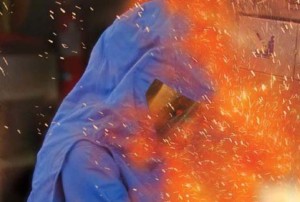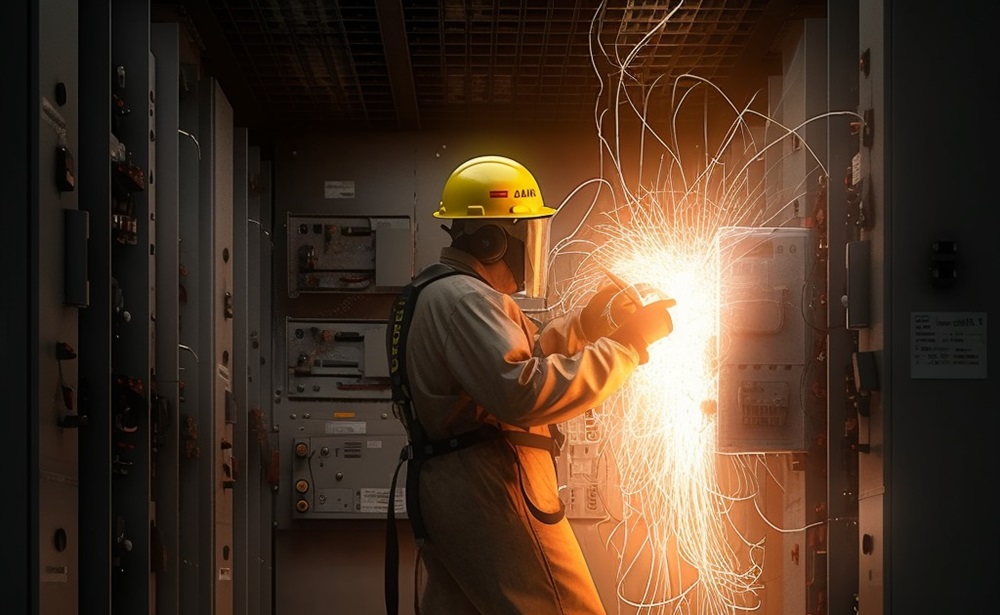Are you arc flash safety aware?
Anyone working on electrical systems needs to know about the dangers of arc flash (also known as arc blast). Awareness of arc flash has grown steadily over the last fifteen to twenty years since its discovery in 1982 by Dr. Ralph Lee. Previous to that, all injury from electrical systems was put down to electrocution.
Lee’s revelation was that as many as 80% of these injuries were really the cause of arc flash. Fast forward to today and we’ve come along way with arc flash. Understanding of the causes of arc flash, improvements in training, technology and arc flash protection (such as PPE, insulated tools, remote operators etc) have all improved beyond measure but still, we see a huge number of arc flash incidents occurring throughout the world – with as many as ten fatal incidents per day in the United States alone.
The main cause of arc flash is a short circuit between two energised conductors. If the electrical energy finds a path to ground or lower voltage, the current then causes an electrical breakdown in the surrounding air, releasing massive amounts of energy that can cause all kinds of damage to both the electrical systems and workers in the vicinity of the blast.

The heat released during the blast, anything up to 20,000 Kelvin, can lead to injury from burns (the most common injury as a result of arc flash, hence the need for the appropriate personal protective equipment, especially FR clothing), can create and push out molten metal with the heat and force of the blast. The increase in temperature causes rapid expansion of gases, causing a blast wave that can cause impact and fall damage to workers in the vicinity of the blast.
There are a number of other risks involved with arc flash, and all are potentially disabling or worse. Depending on a workers location, each country has their own legislation and safety requirements that workers should adhere to, but most agree on the most important strategies for avoiding arc flash incidents. All electrical systems should have an arc flash hazard analysis performed in order to ascertain the potential risks of working on the system. The analysis can be used in conjunction with an to determine the correct level of PPE required for working on the system, the required tools and the safe working distance, as well as a number of other strategies to mitigate the risks.
Although a hazard analysis can provide a greater understanding of the risks of the system, it can never eradicate the inherent dangers involved in working with live equipment. Where possible, live equipment should always be taken off line before work is undertaken. Although shutting down live equipment poses risks in and of itself and requires its own safety procedures and measures, it will always be safer to work on these powered down systems.
It can often be difficult for workers to get clearance for shutting down a system due to business concerns with shared systems, business down time and a lack of knowledge of the true risks of working on live systems, but it needs to be communicated that the costs of damaged systems and injury to workers far exceed that of downtime (this article on shutting down systems to avoid arc flash brings up some very good points). The more that’s understood, the better the training, the more developed the technology is, the better workers will be able to respond to the potentially life threatening dangers of arc flash incidents.
Enhancing Workplace Safety: Arc Flash and Lockout Safety Hasps
Arc flash safety and safety lockout hasps are crucial components in ensuring the safety of workers in industrial environments. Arc flash safety involves protecting workers from the dangers of electrical arcs, which can occur during maintenance or servicing of electrical equipment. Arc flash safety hasps are specifically designed to secure electrical panels and switches during lockout/tagout procedures, preventing accidental energization and minimizing the risk of arc flash incidents. These hasps are typically made of durable materials such as aluminum or steel and feature non-conductive coatings to enhance electrical safety.
Lockout safety hasps play a vital role in lockout/tagout (LOTO) procedures, which are implemented to isolate energy sources and prevent machinery or equipment from being accidentally turned on during maintenance or repair work. These hasps allow multiple workers to apply their personal padlocks to the same energy isolation device, ensuring that it cannot be operated until all maintenance tasks are complete and all padlocks are removed. By securely locking out energy sources with lockout safety hasps, workers can work confidently knowing that they are protected from unexpected start-ups and hazardous energy releases.
In addition to their primary function of enhancing workplace safety, arc flash safety and lockout safety hasps offer practical benefits such as ease of use, durability, and compatibility with a variety of lockout devices. Their bright colors and prominent labeling help improve visibility and communication during lockout procedures, while their robust construction ensures reliable performance even in demanding industrial environments. Investing in high-quality arc flash safety and lockout safety hasps is essential for organizations committed to prioritizing employee safety and compliance with regulatory standards such as OSHA’s Control of Hazardous Energy (Lockout/Tagout) standard.

